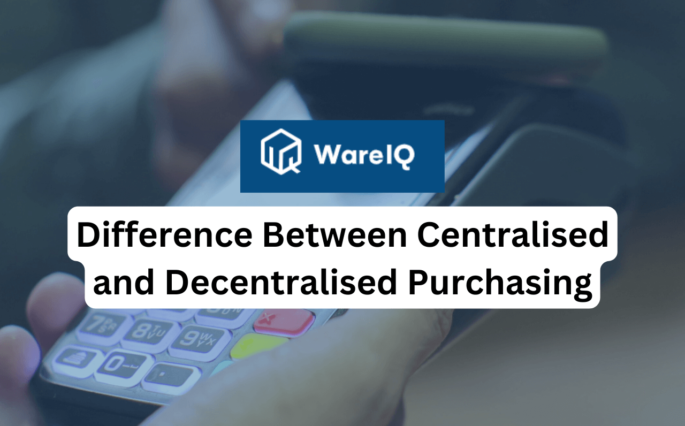Transportation Packaging Precision: Transforming with Strategic Packaging Solutions


Whenever we think of “packaging,” we might remember the boxes or wrappers we see in stores that keeps items safe when they’re shipped to us. But transport Packaging may not be that apparent. Transport packaging is all about B2B needs. Transportation packaging is employed to protect products from rough handling during shipping – getting wet, shaken around, or squishing, like containers, cargo, wooden crates, pallets, etc.
Unlike the packaging for stores that focuses on looking good to attract customers, transportation packaging is all about being strong and keeping things safe. It is paramount to get products from one business to another without any damage. Understanding how transportation packaging works is key for any business that wants to make sure their goods arrive in top condition.
Best Strategies for Transport Packaging
Packaging is an important marketing tool that companies have to focus on in the entire supply chain. When businesses want to scale, strategising transportation packaging is crucial to maintain accountability and track of various costs and materials used for the purpose. Some of the best strategies are given below.
Choose Right Transport Packaging
Choosing the right packaging is crucial for your product’s success. Before considering transportation, make sure your product is safely packed. For example, packaging is essential for freshness and quality in the food industry. Similarly, non-spilling is important for liquid products.
Outsourcing transportation packaging solutions greatly helps with efficiency and quality for SMBs, if you lack expertise and resources. Durability, aesthetics, environment, and the consumer experience are other factors to consider for effective transportation packaging.
Go for Durable Packaging Materials
Durable packaging materials provide protection against impacts, vibrations, and temperature changes to ensure that a product retains its condition. Consider using additional protective materials like bubble wrap or foam inserts for added defence. Durable packaging not only also reduces the likelihood of returns and replacements. By choosing resilient materials, you’ll save time and resources in the future.
Smart Labelling
Efficient transportation packaging must involve effective labelling systems. Smart labelling solutions like barcodes and RFID tags help streamline the tracking of shipments. It reduces errors, enhances inventory management and order fulfilment eventually resulting in high customer satisfaction.
Smart labelling systems also enable real-time visibility into the movement of goods. In the event of unexpected delays or disruptions, companies can proactively solve problems and reroute the delivery lines if necessary.
Go for Sustainable Packaging
82% of consumers are willing to pay extra for receiving their products in sustainable packaging. People are increasingly valuing eco-friendly practices. So companies must start using sustainable packaging options like recyclable or biodegradable materials. Sustainable materials are lightweight, cutting down on transportation costs. They are also environmentally friendly. Companies that prioritise sustainability earn positive brand perception and loyal customer base in the long-run.
Organise Warehouse Management
Efficient transportation packaging starts in your warehouse. While it doesn’t have a direct impact, streamlining warehouse operations definitely speeds up the packaging process and improves the accuracy. Get onboard efficient Warehouse management systems (WMS) that can optimize the packing process along with inventory control and order picking.
Automate with conveyor belts and robots to handle materials more efficiently and reduce human errors. By making your warehouse efficient, transportation packaging becomes more smooth and seamless.
Related article to read: 5 Types of packaging in warehouses
Tie Up with Right Logistics Partners
SMBs may not have the needed budget or expertise for looking after logistics. Working with partners outside your company is a good idea here. Choose trustworthy logistics partners for packaging solutions and successful transportation. Collaborate with carriers and freight forwarders who consistently deliver goods safely and on time.
Not just onboarding, but keep in touch with your partners regularly to stay updated on industry practices and regulations. Building strong relationships with reliable partners is often the only way to ensure the safety of your products during transportation.
Reusable Transport Packaging
Reusable transportation packaging includes a variety of items like pallets, bins, large containers known as IBCs, durable plastic crates, and small handheld containers like totes, trays, and protective padding. They’re crafted to be tough and can be used over and over to help safely and effectively move products from one point to another across supply chains.
For packaging to be officially called “reusable” according to the Reusable Packaging Association (RPA), it must meet four requirements:
- It is made for being used again, either for the same job or for another helpful use in moving goods around.
- It needs to be really sturdy—a reusable transportation packaging can handle lots of trips and last for years.
- You can keep on using it repeatedly, because it can be collected, checked, fixed if it’s broken, and then sent back out to do its job.
- A returnable transportation packaging must belong to a setup that avoids the landfill, ensuring it gets collected and recycled when it’s ready to be discarded.
Reusable transportation packaging is often used for moving things like spare parts, as well as for sending finished goods to storage places or marketplaces. These transport packs are made to last and are built out of strong stuff like metal, plastic, or wood that we can recycle.
Although they’re mainly used for shipping stuff between businesses, more online shopping and home delivery services are starting to see how valuable these reusable packages can be for delivering items straight to people’s doors.
Example of Transport Packaging
There are all sorts of ways to pack up stuff for shipping. Each transportation packaging is good for different things. Some of the transportation packaging examples are as follows.
Cardboard Boxes: Cardboard boxes are the most common. Made from pressed wood bits, they are awesome for light things like snacks or makeup. People love them because they’re cheap, you can reuse them, and they don’t hurt the planet too much.
Bagged Cargo: For sugar or seeds to get stuffed into bags, these bags are packed into bigger boxes or containers, which adds more protection.
Pallets: Pallets are like big, flat trays made from wood, plastic, or metal. They make moving around a bunch of boxes at once way easier.
Wooden Crates: For super heavy or big stuff, wooden crates keep things like machines from bouncing around. Wooden crates are available in any size.
Steel Drums: The big metal barrels used to ship liquids or anything that might spill because once you close them up, nothing gets out. Stuff like oils and chemicals typically get shipped in these transportation packaging types.
Containers: Transport packages used to move goods around on ships, trains, and planes. There are two types: dry containers for stuff that doesn’t need to be kept cold, and refrigerated ones for stuff that can go bad.
Conclusion
Transport packaging is a complex task that requires careful thought and collaboration. It is very crucial for businesses to improve product safety, brand impression, reduce costs, and contribute to sustainability. As the logistics industry evolves, staying proactive and embracing innovation is also a non-negotiable for success in transportation packaging. It ultimately has a bearing on customer experience.
Also read: Importance of Packaging in Ecommerce
FAQs
What is returnable transportation packaging?
Returnable packaging is a system that uses reusable racks, pallets, containers, or bulk containers. Returnable packaging systems are made of durable materials like wood, plastic, and metal. Unlike one-way packaging, they can be used multiple times. Businesses benefit from lower costs and a quick return on investment by reusing these strong packaging solutions. Returnable transportation packaging also helps with efficient distribution, handling, and storage of products.
What are some transportation packaging examples?
There are various types of transportation packaging for shipping.
Cardboard boxes are popular because they’re cheap, reusable, and eco-friendly;
Bagged cargo that is used for items like sugar or seeds, providing extra protection when placed in larger boxes or containers;
Pallets to move multiple boxes at once;
Wooden crates that are used for heavy or large items to prevent them from moving around;
Steel drums for shipping liquids or spillable items.
Containers for transporting goods by ship, train, or plane.
What is shipment packaging?
Shipping packaging refers to a package that helps transport products to the end user. Its main purpose is to protect the goods during the shipping process. Private households dispose of this type of packaging, so it must be licensed for a fee by the initial distributor in a dual system
What are the best strategies for transportation packaging?
Strategies for transport packages are important for safety and quality of products during transportation. Some of them are:
Using appropriate packaging materials to withstand the rigours of transportation.
Efficient packaging to prevent shifting or damage during transportation.
Smart labelling with handling instructions and fragile warnings.
A thorough quality control process to inspect and test the packaging for durability and effectiveness to identify any potential issues and improve the overall packaging strategy.







